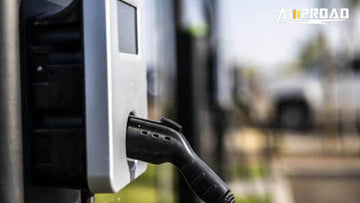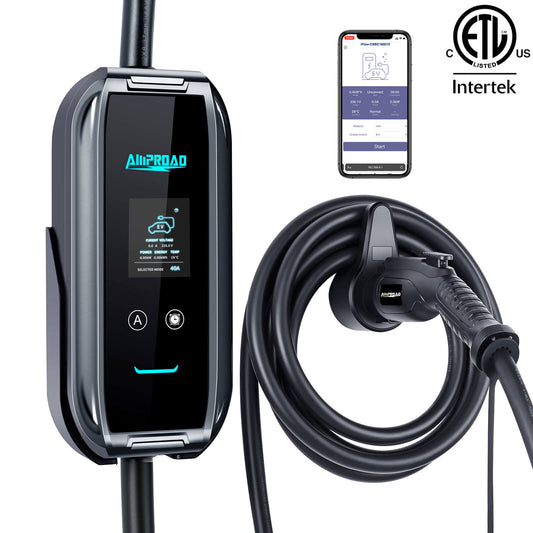
This exploration unpacks how your car communicates with the station, the built-in safeguards that protect your battery, and how you can manage your charging sessions effectively. From understanding billing practices to optimizing charging time, we’ll provide insights that ensure a seamless and cost-efficient experience. Get ready to make the most out of every visit to a ChargePoint station!
Does Chargepoint Stop Charging When Full?
ChargePoint stations incorporate advanced safety features that prevent battery damage by automatically stopping the charging process when your EV's battery reaches full capacity. The station communicates directly with your vehicle's battery management system, which constantly monitors the charge state. When the battery approaches 100% charge, the system gradually reduces power delivery before completely shutting off. This intelligent communication ensures optimal battery health and longevity while eliminating any risk of overcharging. You can trust the station to handle the charging process safely without manual intervention.
ChargePoint's Charging Process and Notifications
In the realm of electric vehicle (EV) charging, ChargePoint stands out as a leader with its user-friendly and efficient charging solutions. Understanding how ChargePoint stations interact with EVs and how they keep users informed is crucial for maximizing the benefits of your EV charger.
How does a ChargePoint station typically communicate with an electric vehicle (EV) during charging?
A ChargePoint station communicates with an electric vehicle (EV) through a process that ensures efficient and safe charging. When an EV is connected to a ChargePoint station, the station and the vehicle engage in a handshake process. This involves the exchange of information such as the vehicle’s battery status, charging capacity, and current charge level. The ChargePoint station adjusts its power output based on this information to deliver the optimal charging rate for the vehicle.
The communication process is facilitated by a combination of hardware and software protocols. The station's built-in software monitors the charging process in real-time, ensuring that the vehicle is charged according to its specific requirements. This sophisticated communication ensures that the EV receives the correct amount of power, preventing issues such as overcharging or undercharging. The seamless interaction between the EV and the ChargePoint station exemplifies the advanced technology behind modern EV chargers.
Does ChargePoint send notifications to the user's phone app when charging is complete?
ChargePoint enhances the charging experience by sending notifications to the user's phone app. This feature ensures that EV owners are always informed about the status of their charging session. Once you plug in your vehicle and initiate the charging process, the ChargePoint app provides real-time updates. Users can track the charging progress directly from their smartphones, making it convenient to manage their time effectively.
When the charging session is complete, the ChargePoint app sends an instant notification to the user. This eliminates the need to constantly check the vehicle or the charging station, as you can continue with your activities without worrying about overcharging or leaving the car plugged in for too long. Additionally, the app may provide other useful information such as the amount of energy delivered, the cost of the charging session (if applicable), and any potential issues encountered during the process.
By integrating these notifications, ChargePoint ensures that EV owners have a hassle-free and efficient charging experience. The ability to receive updates and notifications through the app underscores the convenience and advanced functionality of ChargePoint’s EV chargers, making them an excellent choice for both seasoned EV users and newcomers alike.
Preventing Overcharging

Ensuring the safety and longevity of your electric vehicle (EV) battery is paramount. With a ChargePoint charger, you can rest assured that advanced safety mechanisms are in place to prevent overcharging and protect your investment.
Do ChargePoint stations have built-in safety features to prevent overcharging an EV battery?
ChargePoint chargers are equipped with sophisticated safety features designed to prevent overcharging an EV battery. Overcharging can cause significant damage to an EV battery, potentially shortening its lifespan and impairing its performance. To mitigate this risk, ChargePoint incorporates several safety measures into their charging stations.
One key feature is the intelligent communication system between the EV and the ChargePoint charger. This system constantly monitors the battery's status and adjusts the power delivery accordingly. The charger reduces or stops the power flow as the battery nears full capacity, ensuring that it receives just the right amount of charge. Additionally, ChargePoint chargers have built-in sensors and software algorithms that detect any anomalies in the charging process, such as overheating or voltage irregularities, and can automatically shut off the charging session to prevent damage.
How does a ChargePoint station detect when an EV battery is fully charged?
A ChargePoint station uses a combination of advanced technology and communication protocols to detect when an EV battery is fully charged. The process begins with the initial handshake between the EV and the charger, where they exchange information about the battery's current state and its charging requirements.
Throughout the charging session, the ChargePoint charger continuously monitors the battery's voltage and current levels. As the battery approaches full charge, the voltage increases and the current decreases. The charger’s software algorithms analyze these changes in real time, ensuring that the charging rate is gradually reduced to prevent overcharging.
Once the battery reaches its full capacity, the EV’s onboard charging system sends a signal to the ChargePoint charger to stop the power flow. This communication ensures that the charging process is terminated at the precise moment the battery is fully charged, safeguarding the battery from overcharging and potential damage.
Additionally, the ChargePoint charger includes fail-safe mechanisms that provide an extra layer of protection. If for any reason the communication between the EV and the charger is interrupted, the charger is programmed to stop charging automatically after a predefined period. This ensures that even in the unlikely event of a communication failure, the battery will not be overcharged.
User Control and Stopping a Charging Session
Understanding how to manage your EV charging session is crucial for efficient energy use and battery maintenance. With the home EV charger and the ChargePoint app, users have significant control over their charging sessions. Let’s delve into the specifics of how you can manage and terminate a charging session effectively.
Can a user manually stop a charging session through the ChargePoint app even before the battery is full?
A user can manually stop a charging session through the ChargePoint app even before the battery is fully charged. This feature provides flexibility and control, allowing users to interrupt the charging process whenever they need to. For instance, if your plans change and you need to leave sooner than expected, you can easily stop the charging session from your smartphone. The ChargePoint app is designed to be user-friendly, with an intuitive interface that makes it simple to monitor and manage your EVSE home charger.
To stop a charging session, open the ChargePoint app and navigate to your active charging session. You will find an option to stop the session, which, when selected, will immediately halt the power flow to your EV. This functionality ensures that you are always in control, making it convenient to manage your charging needs.
What happens if a user forgets to stop the charging session after their EV is fully charged?
If a user forgets to stop the charging session after their EV is fully charged, the ChargePoint system has safeguards to handle this situation effectively. Modern EVSE chargers, including those by ChargePoint, are equipped with smart technology that automatically detects when the battery has reached full capacity. Once the EV's battery is fully charged, the charger communicates with the car to stop drawing power.
In addition to this automatic stop feature, ChargePoint chargers are designed to maintain safety and efficiency. They prevent overcharging by terminating the session, even if the user forgets to manually stop it. This not only protects the EV’s battery but also helps in optimizing energy use and reducing unnecessary electricity costs.
Moreover, the ChargePoint app can send notifications to alert users when the charging session is complete. These notifications serve as a helpful reminder to unplug the vehicle, freeing up the charging station for others and ensuring that the charger is ready for the next use.
Overall speaking, the ChargePoint app and EV home charger provide users with substantial control and peace of mind. Whether you need to stop a charging session early or rely on the system’s automatic stop features, these tools ensure your EV charging experience is both convenient and safe.
Financial Considerations and Avoiding Overcharging Costs

When using an EVCS charging station, it's essential to be mindful of financial aspects to avoid unnecessary expenses. Efficient management of your charging sessions not only ensures your EV is ready when you need it but also helps in keeping your costs in check. Here, we explore how billing works with ChargePoint and share strategies to optimize your charging time.
Does ChargePoint continue to bill the user for electricity even after their EV is fully charged?
ChargePoint does not continue to bill the user for electricity after their EV is fully charged. Modern EVCS charging stations, including those by ChargePoint, are equipped with technology that communicates with your electric vehicle. This ensures that once the battery is fully charged, the station stops supplying electricity. This feature helps prevent overcharging and ensures that you are not billed for power that your EV does not need.
However, it’s important to note that some charging stations might impose fees for occupying the charging spot beyond a certain period, even if your EV is fully charged. These fees, known as "idle fees," are intended to encourage users to move their vehicles once charging is complete, thereby freeing up the station for other users. Therefore, it's good practice to monitor your charging sessions and move your vehicle promptly once charging is finished.
Are there any strategies to optimize charging time and minimize potential overcharging costs?
And, there are several strategies you can adopt to optimize charging time and minimize costs:
- Use the ChargePoint App: The ChargePoint app provides real-time updates on your charging session. You can set notifications to alert you when your EV is fully charged. This helps you unplug your vehicle promptly, avoiding idle fees.
- Schedule Charging Sessions: Many EVCS charging stations, including ChargePoint, offer scheduling features. You can program your EV to start charging at specific times, such as during off-peak hours when electricity rates are lower. This can significantly reduce your overall charging costs.
- Monitor Charging Rates: Be aware of the different rates that might apply at various times of the day. Charging during off-peak hours can help you take advantage of lower electricity prices.
- Set Charging Limits: If your EV allows it, set a charging limit to avoid fully charging your battery if it's not necessary. Charging up to 80-90% can be more efficient and prolong the lifespan of your battery.
- Frequent Shorter Charges: Instead of waiting for the battery to be almost empty, frequent shorter charges can be more efficient and can help avoid high costs associated with prolonged charging sessions.
By following these strategies and utilizing the features of your EVCS charging station, you can ensure that your EV is charged efficiently and economically, without incurring unnecessary costs.





